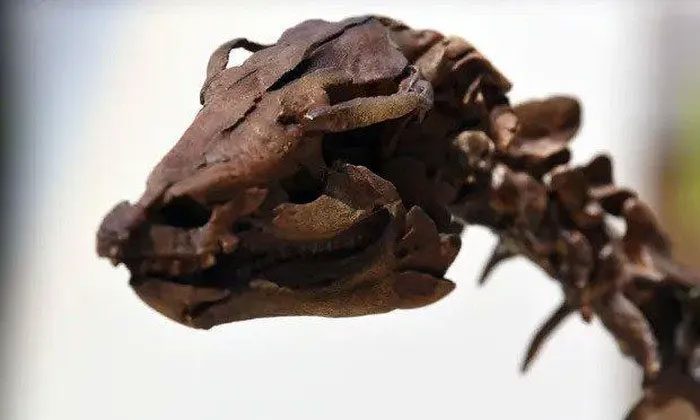Scientists believe they have discovered remarkable evidence of one of the last dinosaur species before extinction, having found their fossil specimens from that time.
The Guardian reported on April 7 that this is a perfectly preserved Thescelosaurus dinosaur foot fossil, with even some skin remnants still intact. Experts have also pinpointed the exact timing of the meteorite impact that struck Earth 66 million years ago, leading to the extinction of the dinosaurs, based on debris from the collision.

A reconstructed skeleton of the Thescelosaurus dinosaur. (Photo: The Guardian).
Phillip Manning, a professor of natural history at the University of Manchester, expressed his astonishment at this discovery.
He stated: “The timeframe we can determine from this specimen is beyond imagination. This is astonishingly wonderful. Never in my career have I wished to see something so beautifully preserved that time has not buried, which can tell the story in a marvelous way.”
The excavation was documented for a BBC film titled Dinosaurs: The Final Day with Sir David Attenborough, in the Tanis area of North Dakota, USA.
He mentioned that the research team also found many traces of fish that inhaled debris from the initial meteorite impact, which occurred 3,000 kilometers away in the Gulf of Mexico.
These pieces of evidence, along with the presence of other debris that fell immediately after the meteorite impact, allowed them to date this site more accurately than standard carbon dating techniques.
Robert DePalma, a graduate student at the University of Manchester and the lead excavator at Tanis, noted: “The detailed traces from this area tell us what happened moment by moment, as if unfolding in a movie. Just looking at the rock column and fossils there takes you back in time.”
The research team also discovered fossil remnants of a turtle impaled by a wooden stake, small mammals and their burrows, skin from a triceratops, embryos of flying reptiles still in their eggs, and debris from the meteorite impact.





















































